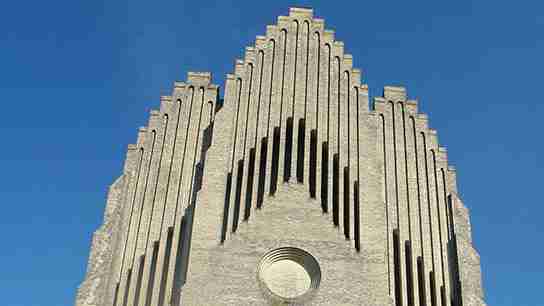Tour Copenhagen's Soaring Grundtvig’s Church
What better way to celebrate Father’s Day—a holiday invented in 1910—than to revisit an architectural masterpiece that was begun in the same decade and also happens to be one of the great familial collaborations of the 20th century? In 1913, Peder Vilhelm Jensen-Klint was commissioned to design and build a church to be named in honor of Danish pastor and scholar N. F. S. Grundtvig. Construction began after World War I, and while the first inauguration of Grundtvig’s Church in Copenhagen was in 1927, final construction was not completed until 1940 and interior renovations until the 1960s.

Jensen-Klint oversaw the project until his death in 1930, at which point his son, Kaare Klint, an architect and furniture designer, took over. Later, Kaare’s son, Esben Klint, also a designer, joined the effort. The Klints had a hand in practically everything, including designing façades, chandeliers, doors, furniture, pulpit, hardware, organs (one resembles the facade), and specifying the very brick used to construct the building.
Unlike the red bricks common throughout Copenhagen, Jensen-Klint used golden-yellow—a color that emphasized ascension, both physical and spiritual. It took five million of these luminous bricks to create a structure located atop a small hill on a special road in Copenhagen that transcended the ordinary. Which reminds me of a line by L. Frank Baum: “The road to the City of Emeralds is paved with yellow brick.”
Happy Father’s Day to all fathers, sons, and grandsons.
Click here to join Lee F. Mindel on a photo tour of Grundtvig’s Church .
__ __